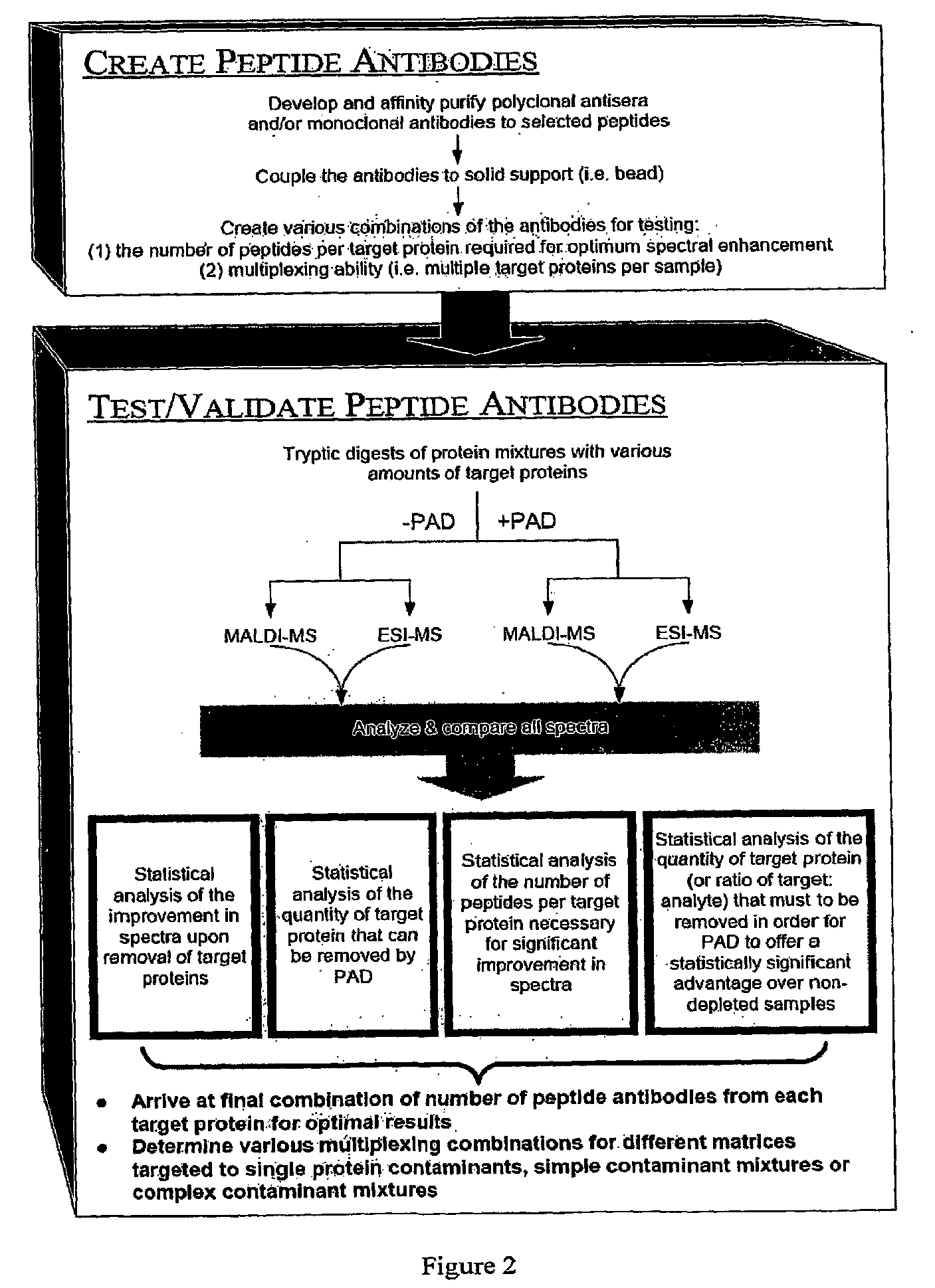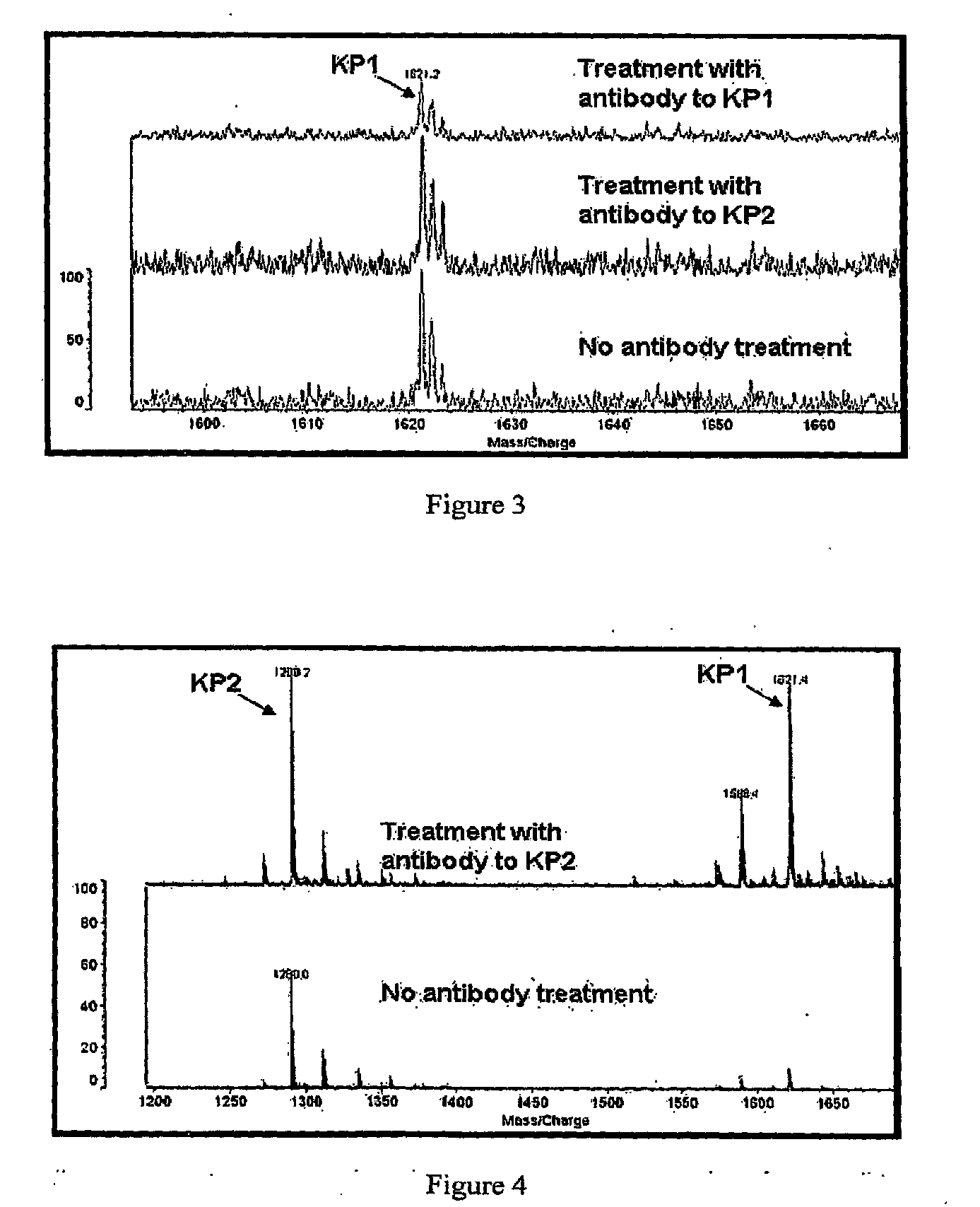Peptide antibody depletion and its application to mass spectrometry sample preparation
a mass spectrometry and antibody technology, applied in the field of mass spectrometry sample preparation, can solve the problems of reducing the detection efficiency of all species present, adversely affecting the ionization efficiency, and peptide mixtures are considerably more complicated than original protein mixtures
- Summary
- Abstract
- Description
- Claims
- Application Information
AI Technical Summary
Problems solved by technology
Method used
Image
Examples
example 1
Immunodepletion of Keratin Peptides from a Sample
[0088]Antibodies against two keratin-specific peptides were used to immunodeplete a sample containing a mixture of purified peptides. The purified peptides used in the experiment were the same as the antigens used for antibody production and were designed to be representative of two distinct regions in the sequence of Keratin 1 and Keratin 2. The peptide named Keratin Peptide 1 (KP1), (CSISDAEQRGENALK, MW=1621 Da) (SEQ ID NO:704), was designed to represent amino acids 424-437 of Keratin 1 and 430-436 of Keratin 2. The peptide named Keratin Peptide 2 (KP2), (ELLQQVDTSTR, MW=1290 Da) (SEQ ID NO:705) was designed to represent amino acids 212-222 of Keratin 1 and 217-227 of Keratin 2.
[0089]The peptides were synthesized chemically and polyclonal antibodies were raised against each peptide, using conventional procedures. We conducted ELISA assays, using conventional procedures, which confirmed that the antisera raised against each of these ...
example ii
Immunodepletion of Highly Abundant Peptides from a Serum Sample
[0092]To select suitable peptides for immunodepletion, we first identified the most highly abundant proteins in serum, as shown in Table 5. We then performed an “in silico” digest of these serum proteins, using cleavage specific sites for trypsin. This provided a total of all of the possible peptides from a tryptic digest. We then looked for these peptides using ESI—liquid chromatography mass spectrometry in samples derived from the tryptic digestion of sub-fractions of human serum. We determined how many times each peptide was observed experimentally, determined their ionizing efficiencies, and determined which peptides were proteotypic under these conditions. On the basis of these analyses, we selected the top 2-4 peptide sequences corresponding to the highest number of observations (Table 7). We will generate antibodies against these 24 peptides, combine the antibodies in a depletion column (an affinity column, using ...
PUM
| Property | Measurement | Unit |
|---|---|---|
| pH | aaaaa | aaaaa |
| pH | aaaaa | aaaaa |
| mass spectral analysis | aaaaa | aaaaa |
Abstract
Description
Claims
Application Information
 Login to View More
Login to View More - R&D
- Intellectual Property
- Life Sciences
- Materials
- Tech Scout
- Unparalleled Data Quality
- Higher Quality Content
- 60% Fewer Hallucinations
Browse by: Latest US Patents, China's latest patents, Technical Efficacy Thesaurus, Application Domain, Technology Topic, Popular Technical Reports.
© 2025 PatSnap. All rights reserved.Legal|Privacy policy|Modern Slavery Act Transparency Statement|Sitemap|About US| Contact US: help@patsnap.com



